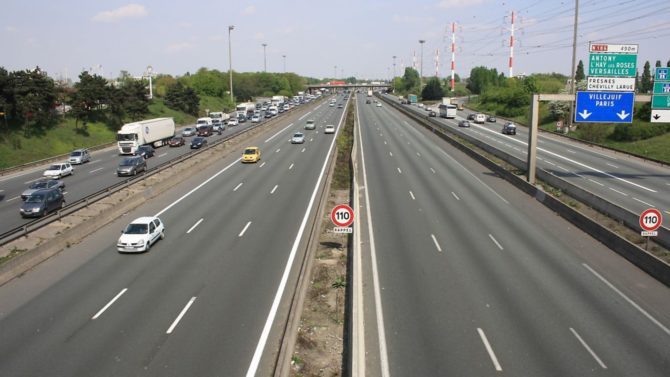14 things you should know about French driving etiquette

Driving in France is one of the best ways to experience the country. Make your next journey hassle-free with our guide to French driving etiquette
1. Stick to the right hand side of the road.
2. Traffic joining your forward direction from the right hand side (priorité à droite) has right-of-way, so be sure to watch out for this. The only exception to this are roundabouts, where cars coming from the left have right-of-way.
3. Turning right on a red light (which is common practice in the US and Canada) is not allowed. You must wait for the green light.
4. You are required by law to carry a number of items in the back of your car. These include: a self-test breathalyser kit conforming to French safety NF standards, a reflective triangle and a vest, to be used in case of breakdowns or other car emergencies.
___________________________________________________________________________
Related articles
50 French words and phrases you need to learn if you are driving in France
10 things you need to know about French etiquette
___________________________________________________________________________
5. All passengers in a car are required by law to wear safety belts, even in the rear seat.
6. Drink-driving limits are strict in France: 50mg of alcohol per 100 ml of blood (lower than the 80mg per 100ml limit in place in the UK).
7. Talking on a mobile phone while driving – even with a hands-free headset – is illegal.
8. It is illegal to sound the car horn in a French city except in case of possible collision.
___________________________________________________________________________
Related articles
The vehicle stickers you need to buy before driving in Paris
___________________________________________________________________________
9. Traffic signals are usually located on the pavement on the right-hand side and change straight from red to green when it’s time to go.
10. Solid white lines marking out an intersection indicate a stop, even if there is no stop sign.
11. Different speed limits apply for different types of weather. In dry conditions, they are as follows: urban areas 50km/h; outside urban areas 90km/h; dual carriageways and non-toll motorways 110 km/h; toll motorways 130 km/h. In adverse weather conditions, the limits are: urban areas 50 km/h; outside urban 80km/h; dual carriageways and non-toll motorways 100 km/h; toll motorways 110 km/h.
12. When parking on the street, if you see a sign marked horodateur or stationnement payant, you’ll need to buy a ticket from a nearby machine.
13. It is illegal to carry a radar-detection device in your car. If your satnav has this facility, you must disable it before driving on French roads.
14. Major French roads can be extremely busy during school holidays. Bison Futé has up-to-date information on road conditions around France while the ASFA has real-time traffic information specific for French motorways.
Like this? You might also enjoy:
27 things you need to know about French food etiquette
Share to: Facebook Twitter LinkedIn Email


